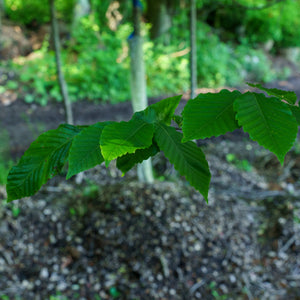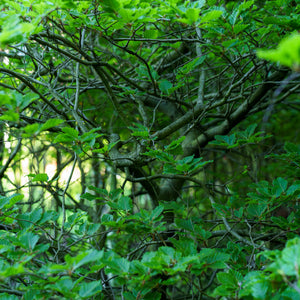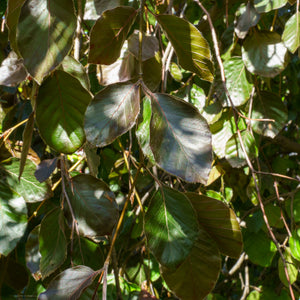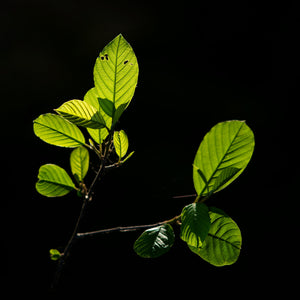The Beech Guide
Beech trees, belonging to the genus Fagus, are stately deciduous trees admired for their smooth gray bark, symmetrical form, and lustrous foliage. Native to Europe, Asia, and North America, these trees are staples in both natural forests and cultivated landscapes. They offer dense shade, vibrant seasonal color, and architectural value, often serving as a focal point in large gardens or parks.
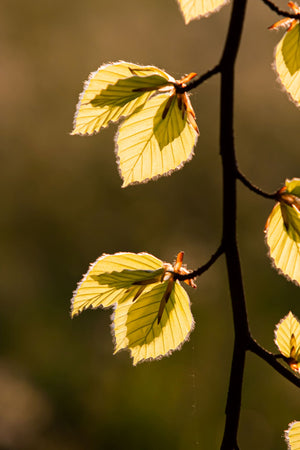
About
The most common species in North America is Fagus grandifolia, or American beech, while European varieties like Fagus sylvatica dominate in cultivated settings. Beech trees are known for their distinctive bark, which is light gray and remarkably smooth even as the tree ages. Leaves are ovate with serrated edges and emerge as bright green in spring, deepening to dark green in summer and turning golden-bronze in fall.
Popular cultivars include Fagus sylvatica 'Pendula', a weeping form that creates dramatic silhouettes; Fagus sylvatica 'Atropunicea', with deep purple foliage; and Fagus sylvatica 'Roseomarginata' (also known as Tricolor Beech), which displays stunning pink-edged variegation. Fagus sylvatica 'Dawyck Purple' and Fagus sylvatica 'Fastigiata' are narrow upright forms, perfect for tight spaces or vertical accents.
Beech trees are long-lived and slow-growing, making them a reliable choice for legacy plantings. Their strong wood and dense branching also make them popular for use as hedging or windbreaks.
PLANTING
Beech trees perform best when planted in the right environment with room to grow.
- USDA Hardiness Zones: Typically hardy in Zones 4–7 for American beech and 5–8 for European beech.
- Soil: Prefers well-drained, loamy, slightly acidic to neutral soil. Avoid compacted or overly wet conditions.
- Sunlight: Thrives in full sun to partial shade. Full sun encourages denser foliage and better fall color.
- Watering: Water regularly during establishment. Mature trees are drought-tolerant but benefit from deep watering during dry periods.
- Spacing: Allow at least 30–50 feet between large specimens, depending on the mature size of the cultivar.
- Planting Time: Best planted in fall or early spring to allow root establishment before heat or frost.
Choosing a planting site with ample space ensures the tree can develop its characteristic broad canopy and serve as a long-term focal point in the landscape.
CARE
Although low-maintenance once established, beech trees benefit from thoughtful care to ensure longevity:
- Watering: Deeply water during dry spells, especially in the first three years after planting.
- Fertilizing: Apply a balanced slow-release fertilizer in early spring, especially in nutrient-poor soils.
- Pruning: Minimal pruning is needed. Remove dead, damaged, or crossing branches in late winter. Weeping forms may need occasional shaping.
- Mulching: Mulch around the root zone to maintain soil moisture and suppress weeds, but avoid piling mulch against the trunk.
- Protection: Young bark is sensitive to sunscald and mechanical damage. Protect trunks from mowers and trimmers.
Beech trees are not particularly susceptible to pests or disease, though scale and beech bark disease can be concerns in some regions.
HOW TO USE
Beech trees make bold design statements and are versatile enough to suit a variety of landscape roles:
- Shade Trees: Ideal for large lawns, estates, and parks where their broad canopies can offer cooling summer shade.
- Specimen Trees: Use colorful cultivars like 'Atropunicea' or 'Roseomarginata' to draw attention in a mixed border or open lawn.
- Hedges: European beech can be pruned into dense, formal hedges, often seen in classical European gardens.
- Woodland Plantings: American beech is a key component of deciduous forests and supports native wildlife.
- Focal Points: Columnar forms like 'Dawyck Purple' make striking vertical accents, while weeping types add sculptural interest.
Beech trees pair beautifully with understory plantings like hellebores, epimedium, hostas, and spring bulbs. Their stately structure complements both naturalistic and formal garden styles.
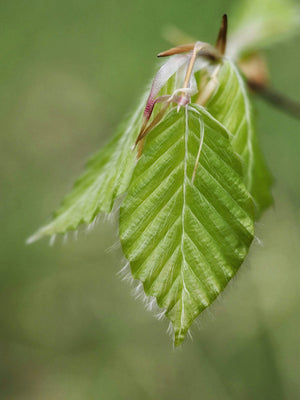
Common Questions
- What does a beech tree look like? Beech trees have smooth, light gray bark, symmetrical branching, and glossy, serrated leaves. Many varieties develop broad canopies, while others have upright or weeping forms.
- Is a beech tree hardwood? Yes, beech is a hardwood species and is commonly used in furniture making, flooring, and cabinetry.
- Where do beech trees grow? Beech trees are native to North America, Europe, and Asia. They prefer temperate climates with moist, well-drained soils.
- What does a beech tree leaf look like? Beech leaves are ovate with wavy or serrated edges and have a glossy texture. They turn golden or bronze in the fall.
- How fast do beech trees grow? Beech trees grow slowly to moderately, typically gaining 12 to 24 inches per year under ideal conditions.
- How long do beech trees live? Beech trees are known for their longevity and can live 150–300 years or more, depending on growing conditions.
- How tall do beech trees grow? Mature beech trees can reach 50 to 70 feet tall and 40 to 60 feet wide, with some cultivars remaining more compact.
Conclusion
Beech trees offer a combination of elegance, longevity, and seasonal beauty that makes them an enduring favorite for landscape use. Whether planted for shade, structure, or ornamental foliage, beech trees bring sophistication and ecological value to gardens and estates. With cultivars ranging from weeping and variegated to columnar and purple-leaved, there's a beech for every design need.
The Beech Collection
Sold Out
Sold Out
Sold Out

